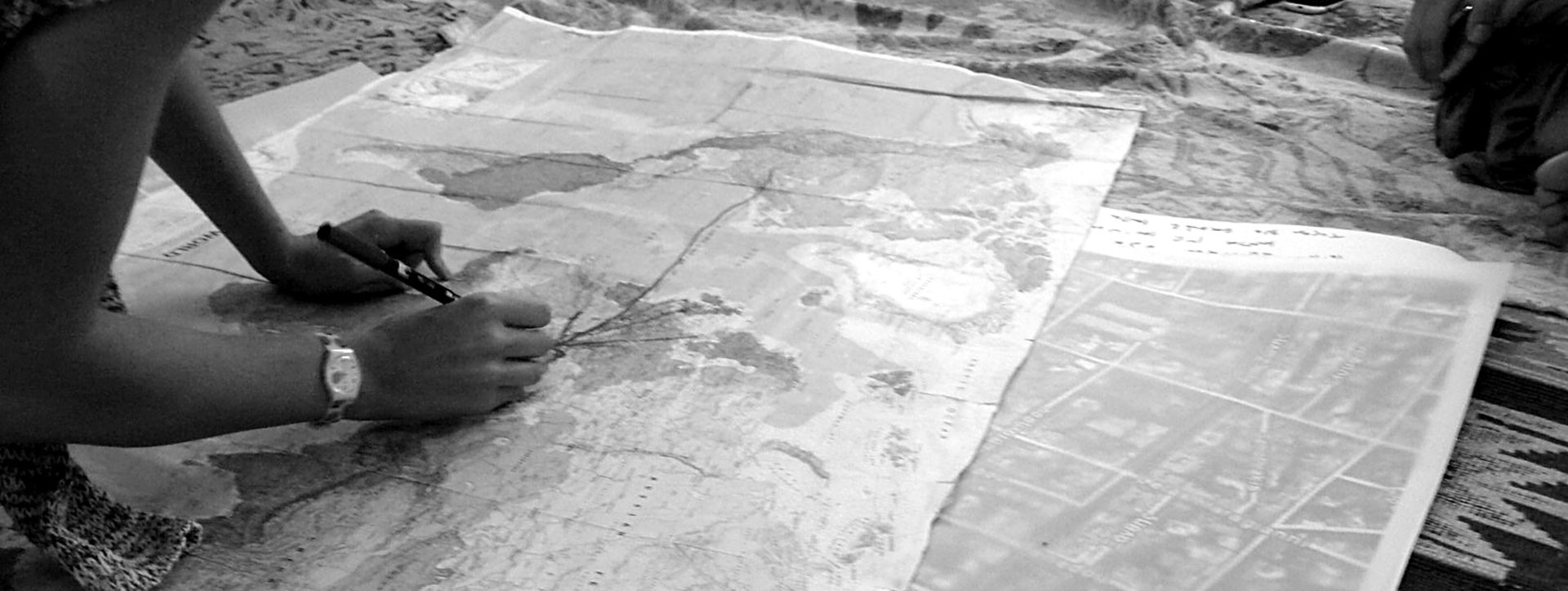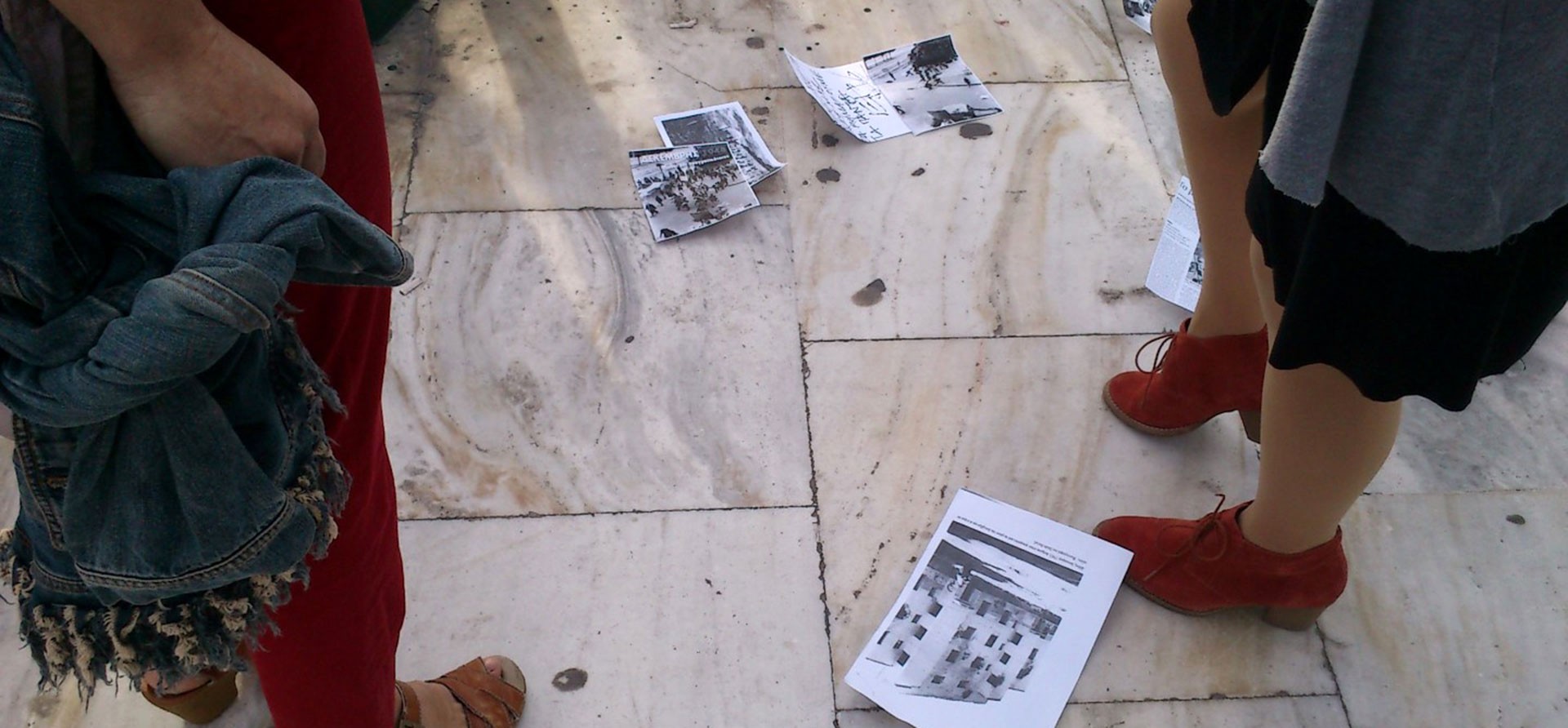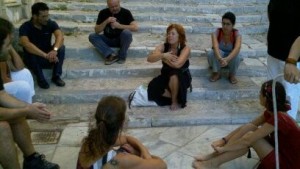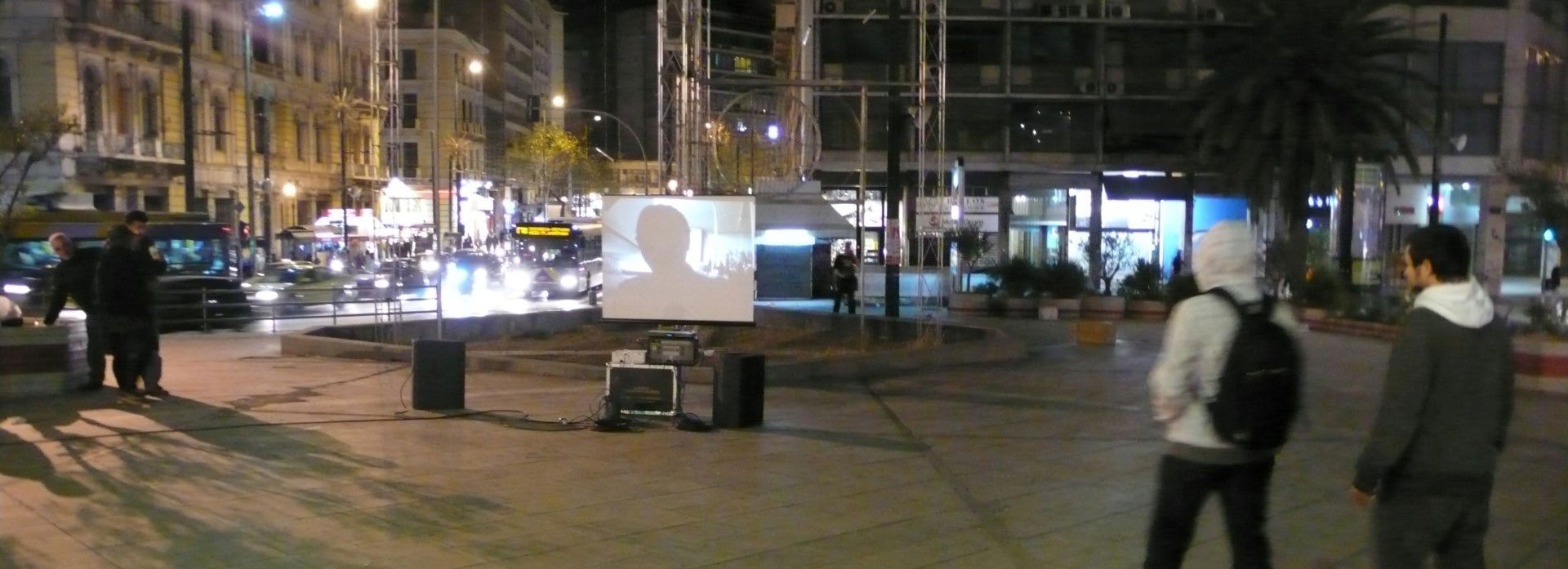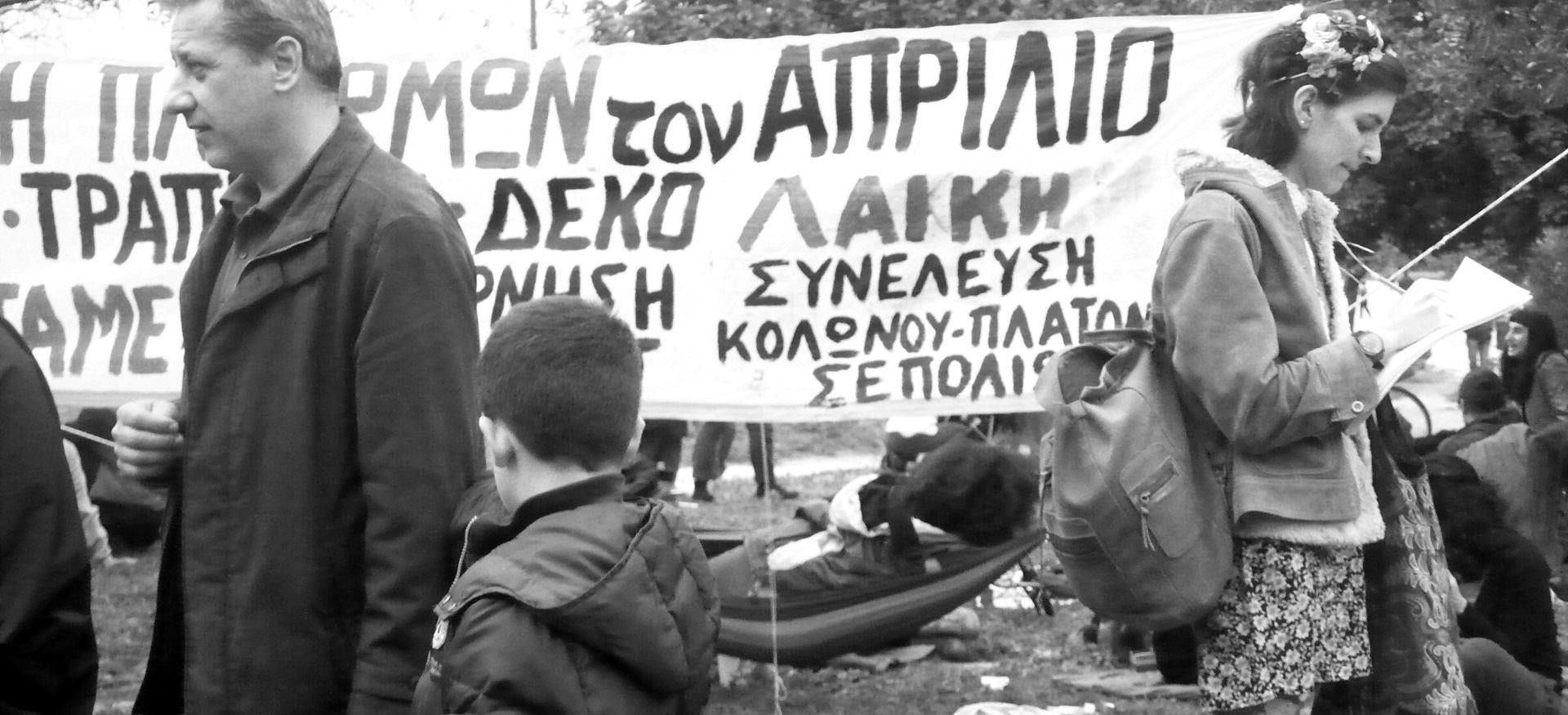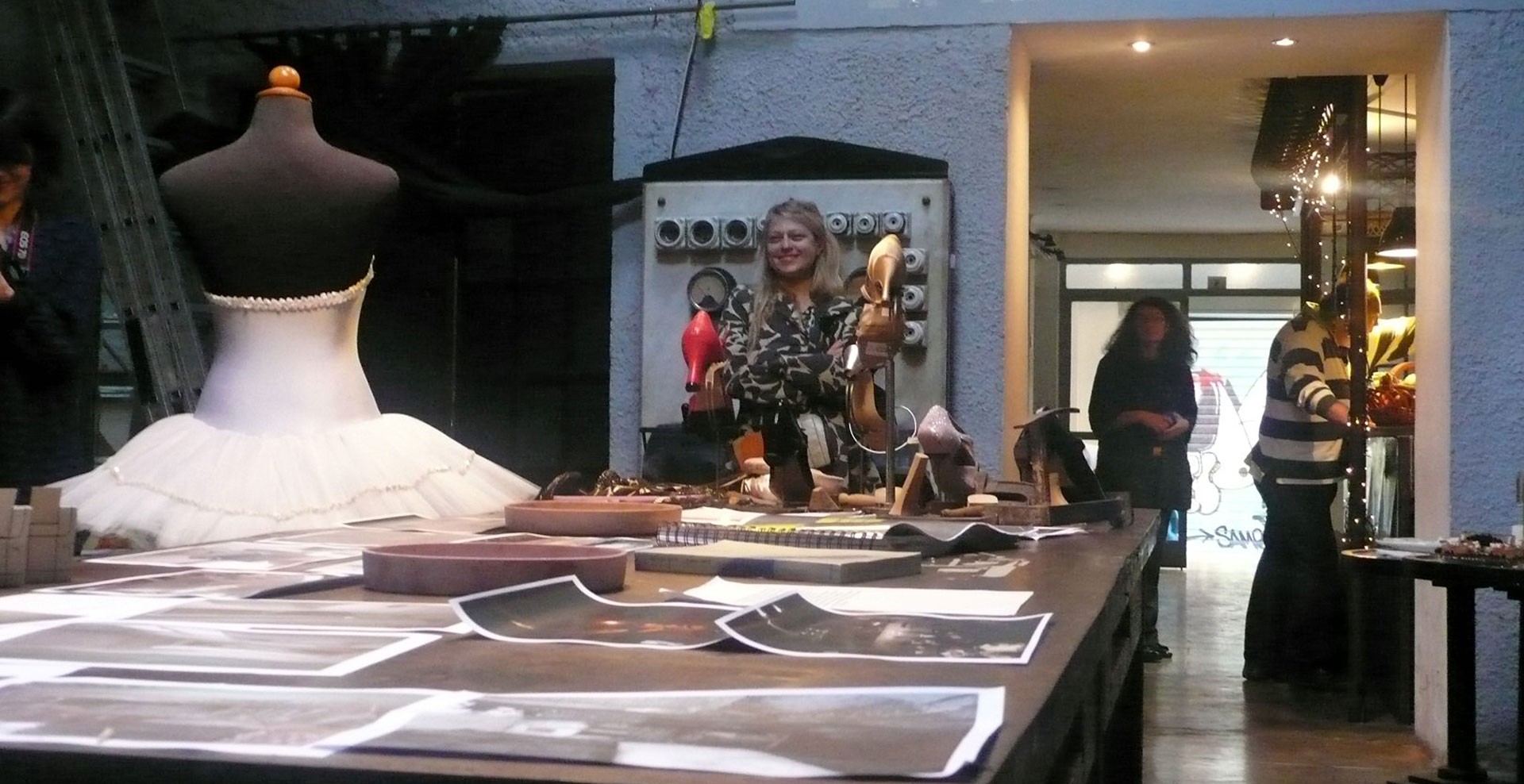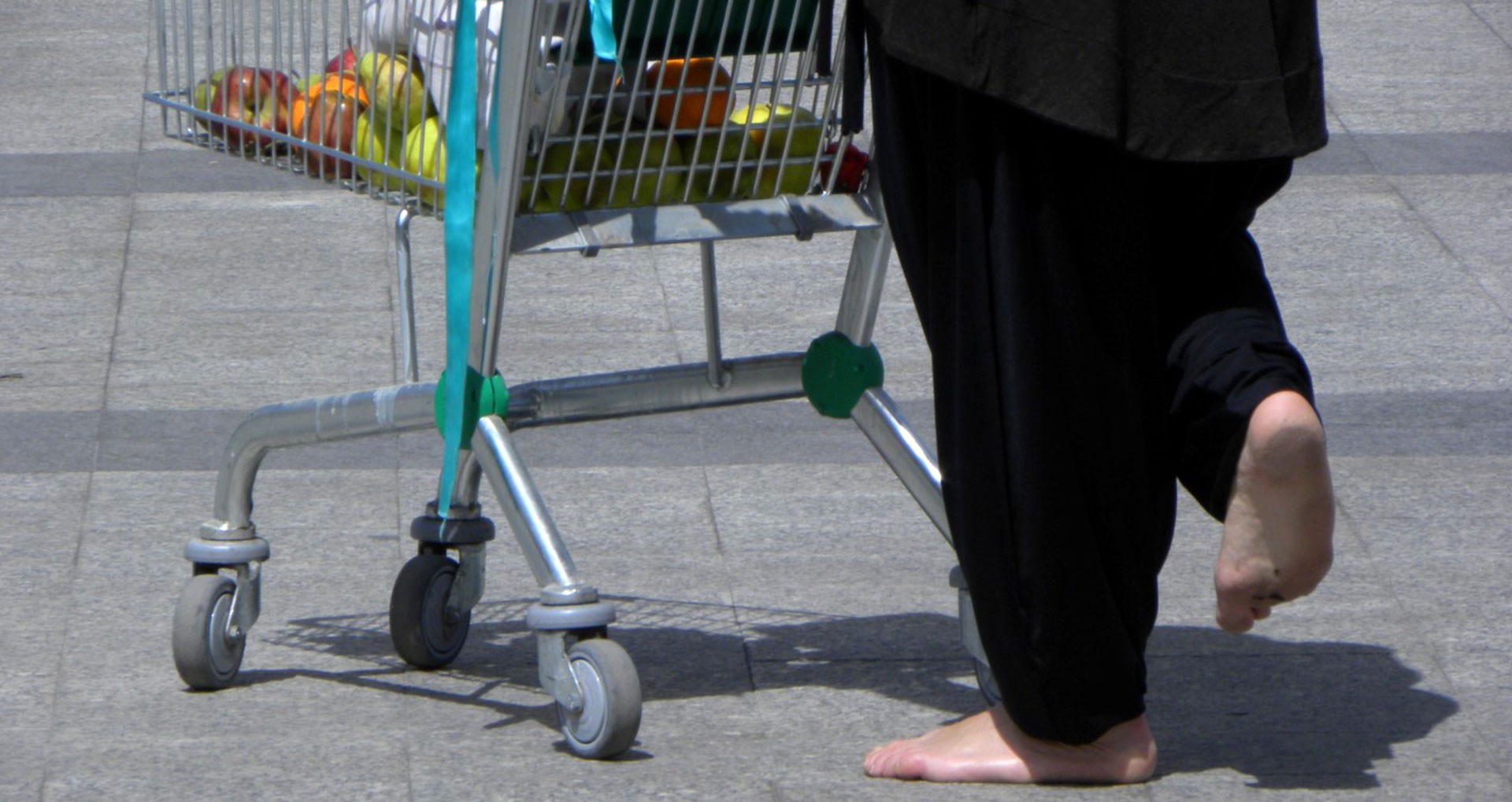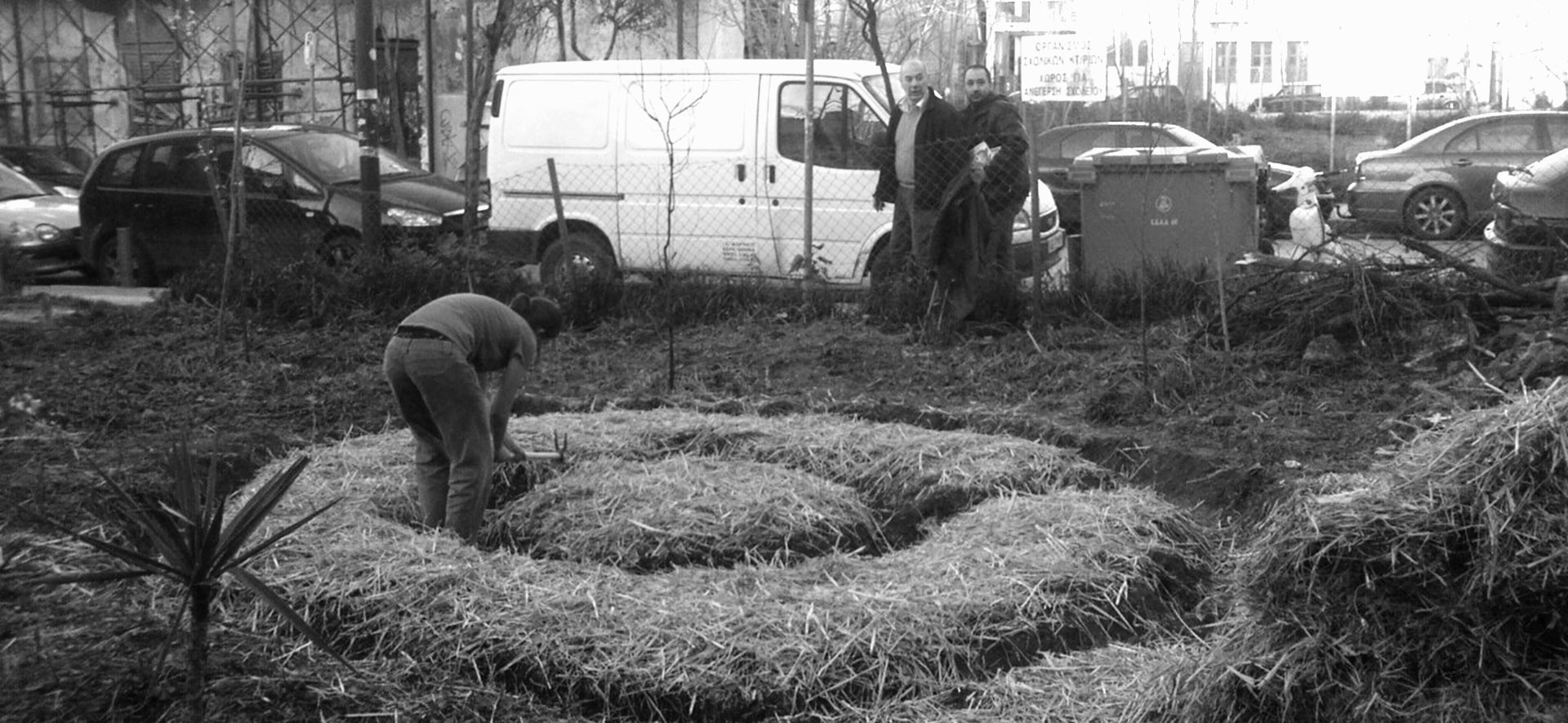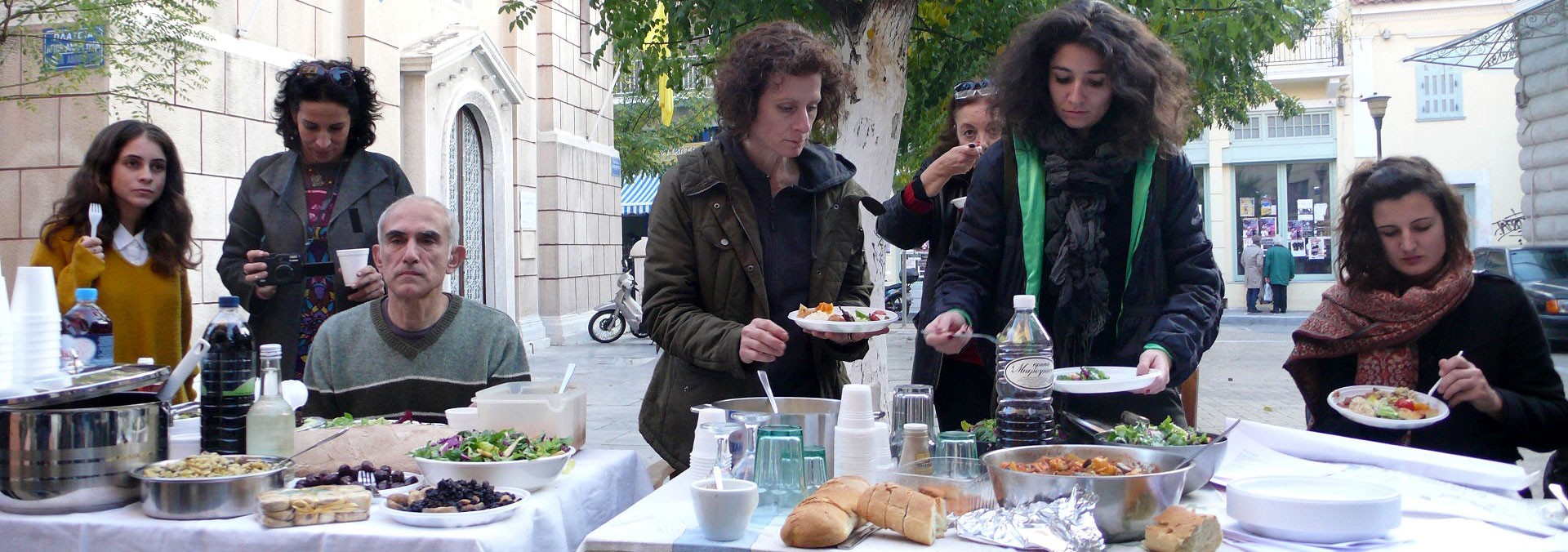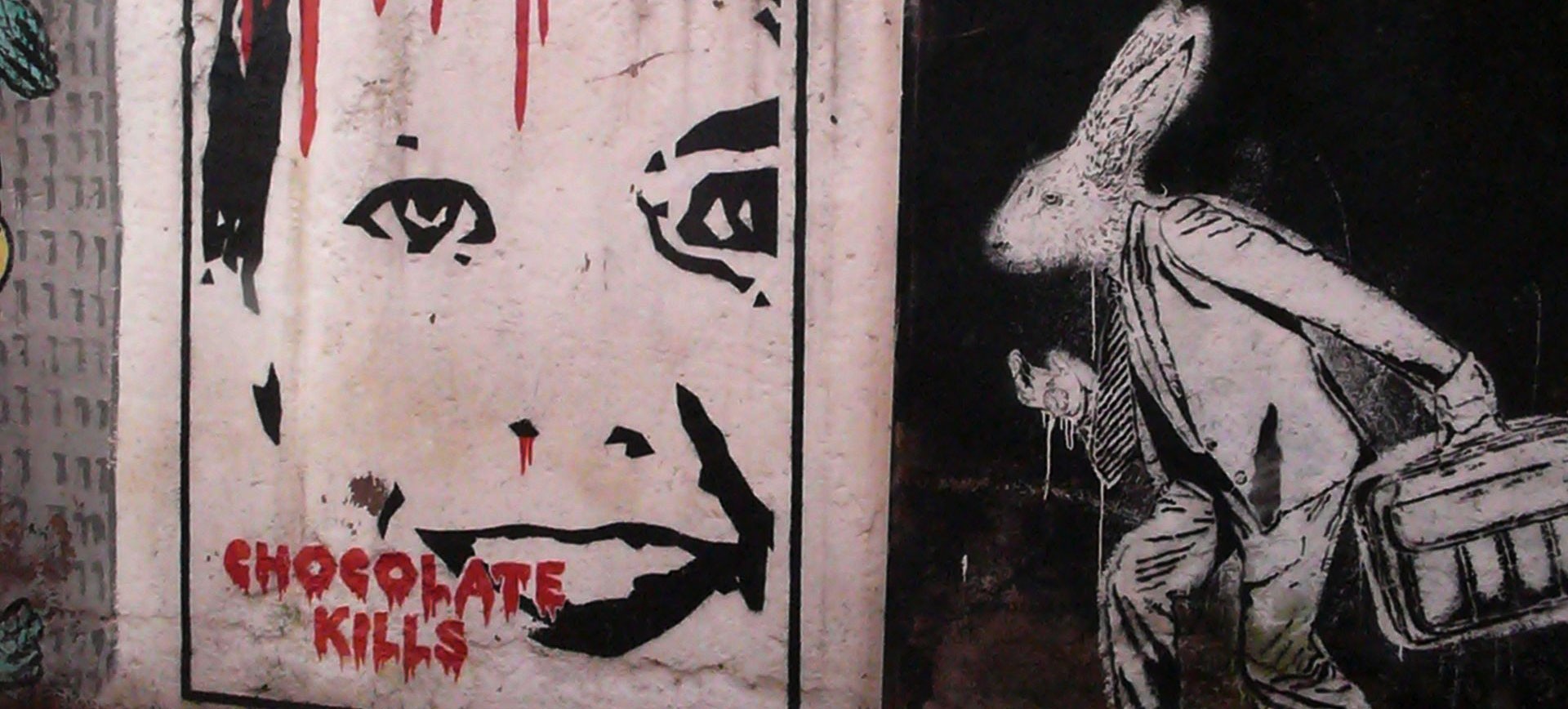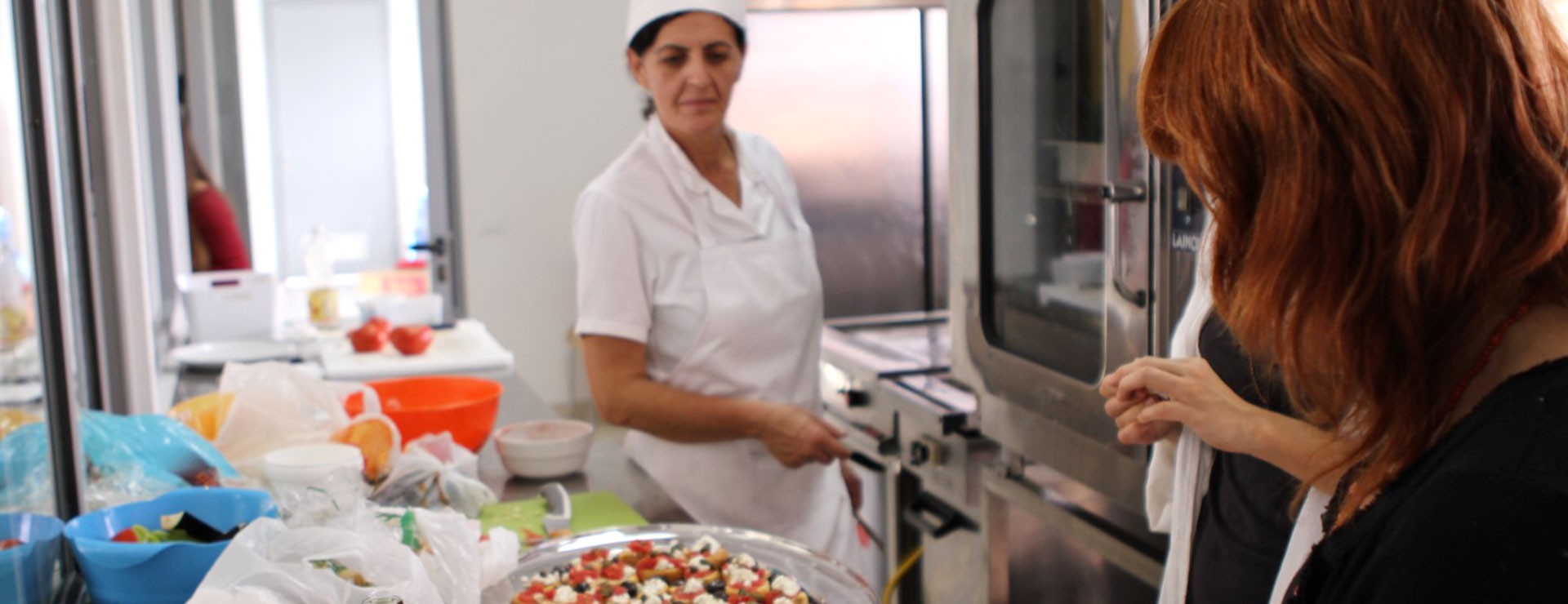Location: empty space on the Agion Asomaton Street -Psirri
A story about the multiple faces of violence and war in the city center.
“We walk in darkness, guided by the light of the utopian star of our projections and driven by the rage of our “No” towards this present inhumanity”
John Holloway
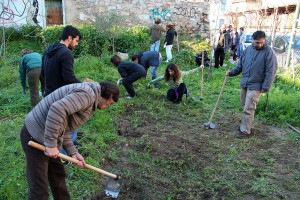
The search for an empty space in the city center to create a self-managed Community Garden was an idea that had begun long ago, with the impact of community gardens that have existed for years in other cities, and after the trip and participation of Nomadic Architecture in an action in jardino Parajiso in Manhattan, at Lower East Side.
Navarino Street Park had a significant influence as well as other struggles for public space in Athens, such as the try of the activists to claim Filopappou hill to remain free, for the Elliniko, for the Cyprus and Patision Park, and for the park in villa Drakopoulou etc.
Communal self-managed gardens in the historic city center are a bet, an important claim and a symbolic gesture of cohabitation of diversities in an area withomnipresence of the police and its residents who were, at that time, homeless people, immigrants hiding to avoid their closure in camps, HIV-infected prostitutes that were jailed, immigrants with carts living by the things they collect and sell from the garbage. The homeless, the young unemployed, the craftsmen who are worried about the very next day are many of the center’s residents.
Continue reading

